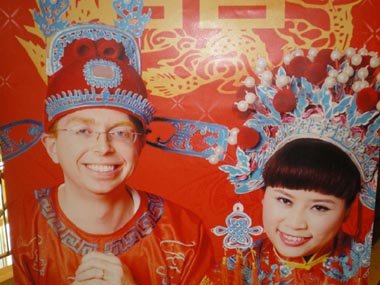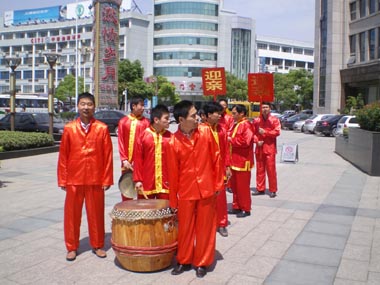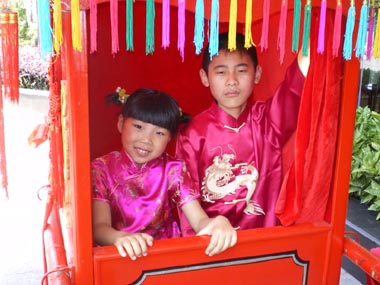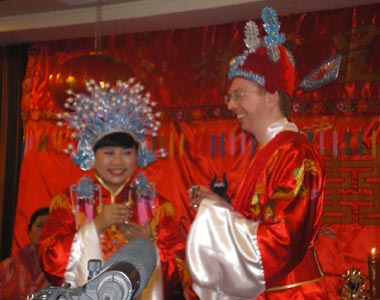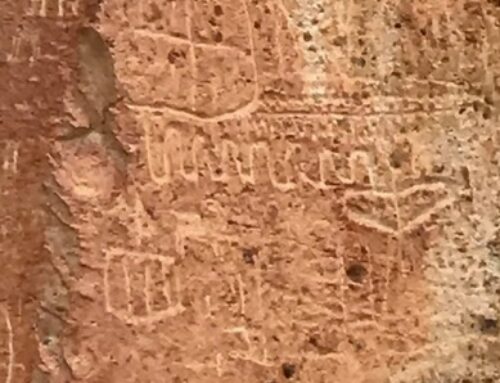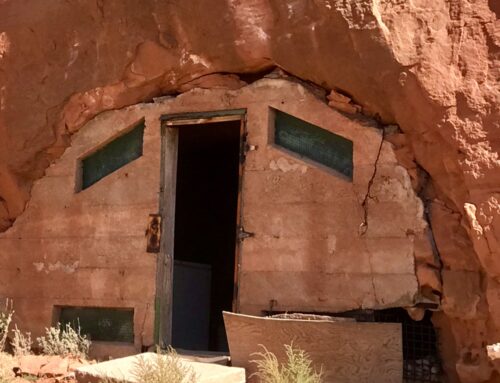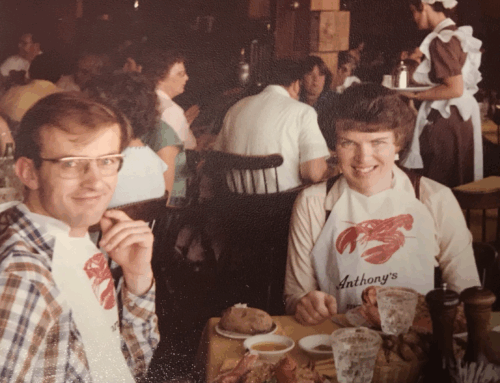YUHONG, China — One of my very good friends told me this spring that her son was going to marry a woman he met in China while learning Chinese in Beijing. They would be marrying in China on May 31, 2008, and celebrating with a traditional Chinese Wedding.
I had watched Eric, the groom, grow up from the third grade. When I heard about the traditional wedding, I thought it would be such a great experience to attend this special celebration and share this important step in his life.
Shortly after Barbara told me about Eric’s wedding in China, Dick Jensen from Murdock Morris travel called and asked if I would like to go to China as a tour guide for a month. I would have the opportunity to be the American Guide for three different tours. It did not take me long to say YES.
When I got my trip schedule for China, I learned that I would have a week off in the middle of the month and the week that I had off was the week that Eric was going to have the traditional wedding.
Barbara and Jack Dahl invited me to come to the wedding. What an incredible opportunity! I had been to China twice before but I had not done any traveling by myself in China. I was sure that even though there is a major language barrier I could figure it out.
After the first tour flew out I, boarded my flight in Beijing and flew to Hon Joe, a city of more than one million. It was very near Yuhong, where the wedding would take place. I have been told by many Chinese that it is not really often that Chinese people have a traditional wedding. I was truly about to experience an unusual opportunity.
The celebration began Saturday morning May 31, 2008 at 10:00 AM. The groom and his family met at the Fengdu Hotel entrance. We left with the bride’s carriage to go the bride’s grandmother’s home, which was about two blocks away.
We were led by two lion dancers and a band of drummers. The band was all dressed in red, and the family and friends were dressed in typical Chinese dress.
Many people along the way came and walked along with the wedding parade. When we arrived at the grandmother’s apartment building, we were all invited in for sweets. The bride and groom also had sweets together. After thirty minutes, a gong sounded three times and the fireworks began to go off. They were louder that I had ever heard.
The bride’s head was covered with a red cloth. The groom helped her down to the bridal carriage, where two young children had been riding in the carriage from the hotel. Just before she got into the carriage, the groom helped her put on a pair of new red shoes (symbolizing stepping into a brand new future and leaving everything else behind). The bride’s family set off firecrackers to send her off.
11:00 — Accompanied by the lion dancers, the band, and firecrackers, the carriage left for the hotel. The groom walked in front of the carriage, and the children who had been in the carriage now walked alongside it. The carriage took a different route to the hotel from the route it had taken earlier that morning. Upon arriving at the hotel, the lion dancers and band performed at the hotel entrance, while firecrackers continued to go off in the background.
11:30 — The groom led the bride into the hotel, pulling her by a piece of red cloth that had a large flower in the middle. The bride, wearing a red veil, walked up the stairs with her groom to the second floor ballroom, where more than 200 guests were seated for this special occasion.
11:38 to 12:10 (A very lucky time) — The wedding ceremony. The lion dancers entered the ballroom and performed on stage. After their performance, the fathers of the bride and groom gave them a red envelope with money for their services.
The host announced the entry of the bride and groom. First came the children, bearing candy and peanuts. (The Chinese word for “peanut” is similar to a term for having children, so peanuts symbolize the next generation. Candy means “sweet life.”) The children were followed by the bride and groom.
After walking down the aisle, the bride and groom stepped on a bag (“bag” has the same pronunciation as “generation,” so a bag symbolizes receiving and being accompanied by past generations). Then the couple stepped on and broke a roof shingle (this symbolizes conquering all of life’s difficulties together). After that they crossed over a kettle with hot coals (symbolizing that our lives will be full of warmth. Like a phoenix, the new couple will be purified and reborn by the flames, allowing them to leave all of the bad things behind).
The bride and groom dropped to their knees three times — once to the sky for the light and rain, once to the earth for its food, and one to their parents for their lives. Then the groom removed the bride’s veil.
Next was a tea ceremony, which was a ritual greeting of the bride and groom for each parent. For the first time, Eric called Julia’s parents “Mother” and “Father.” For the first time, Julia called Eric’s parents “Mother” and “Father.” This ritual establishes a ceremonial bond between the two families.
At this point the newlyweds left the room to change clothes.
The father of the bride and the father of the groom made a toast. Then each father gave a speech to the wedding party, thanking them for coming. Jack, the father of the groom, introduced the party of eight who came from the United States to celebrate Erik’s marriage ceremony.
12:10 — The wedding banquet began. The bride and groom returned and went from table to table, greeting the guests and toasting them in thanks for coming.
More than 200 people showed up for the celebration. They were not only treated to an incredible experience, but they were also served a full-course meal that included more than 23 dishes.



